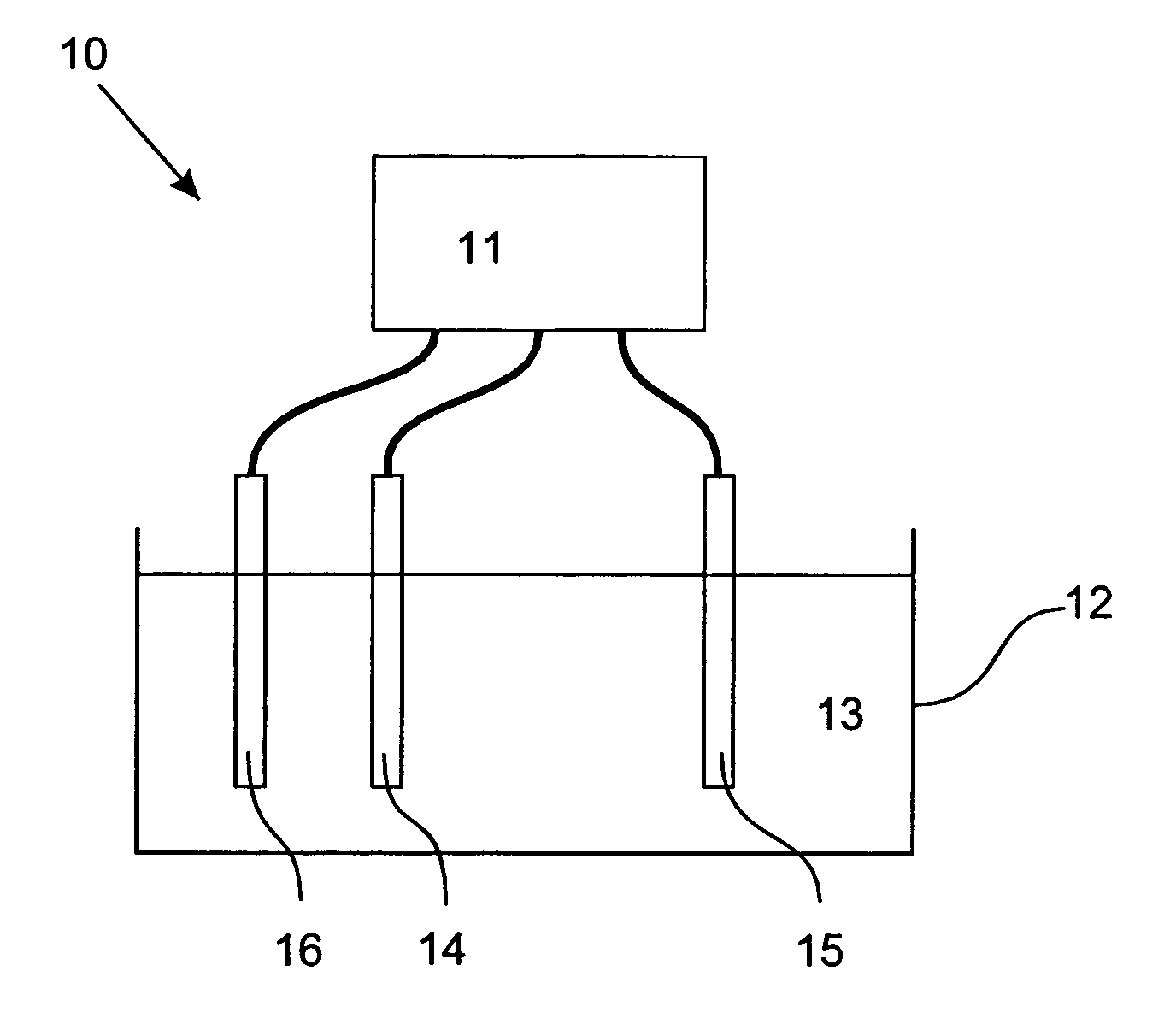Electrode configurations for electrochemically activated systems
a technology of electrochemical activation and configuration, applied in the direction of external electrodes, electrotherapy, electrochemical devices, etc., can solve the problems of severe damage or even death of patients, short circuit, and malfunction of tools, so as to reduce the risk of short circuiting of electrochemical activation, and achieve the effect of compromising the function of the electrochemical activation
- Summary
- Abstract
- Description
- Claims
- Application Information
AI Technical Summary
Benefits of technology
Problems solved by technology
Method used
Image
Examples
Embodiment Construction
[0063]A novel class of surgical tools based on (electrical or) electrochemical actuation principles is disclosed in Published PCT Patent Application No. WO 00 / 78222 A1. One such tool is a micro-anastomosis connector. This is a tubular implant that is used for the reconnection of two ends of a blood vessel (micro-anastomosis). In order to activate such tools at least two electrodes are needed: a working electrode (WE) (14 in FIG. 1), which is the electroactive tool (22 in FIGS. 2 and 30 in FIG. 3), and a counter electrode (CE) 15, also known as auxiliary electrode. Conventionally, the counter electrode is formed of a metal, for instance a gold wire can be used. Also, other electrically conducting materials, coatings, or substrates can be used, such as a gold coated piece of silicon wafer. It has been shown that during surgical procedures, the tool 50 and counter electrode 51 can make accidental mechanical contact (as illustrated in FIG. 4a) that leads to electrical short circuiting, ...
PUM
| Property | Measurement | Unit |
|---|---|---|
| ion permeable | aaaaa | aaaaa |
| electrically insulating | aaaaa | aaaaa |
| ion conducting | aaaaa | aaaaa |
Abstract
Description
Claims
Application Information
 Login to View More
Login to View More - R&D
- Intellectual Property
- Life Sciences
- Materials
- Tech Scout
- Unparalleled Data Quality
- Higher Quality Content
- 60% Fewer Hallucinations
Browse by: Latest US Patents, China's latest patents, Technical Efficacy Thesaurus, Application Domain, Technology Topic, Popular Technical Reports.
© 2025 PatSnap. All rights reserved.Legal|Privacy policy|Modern Slavery Act Transparency Statement|Sitemap|About US| Contact US: help@patsnap.com



